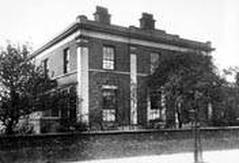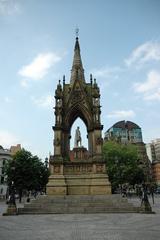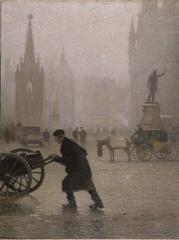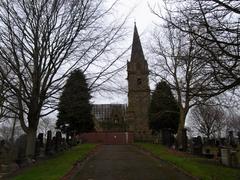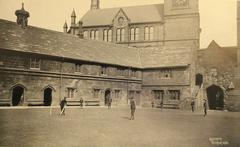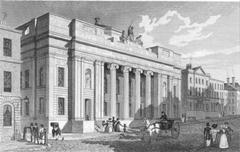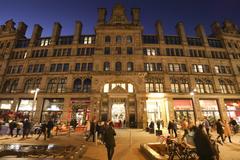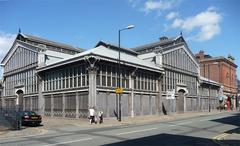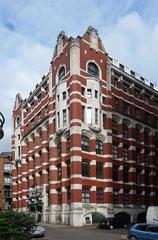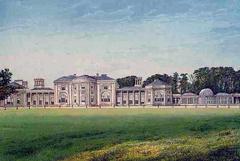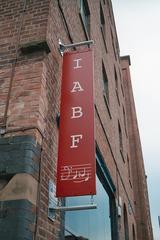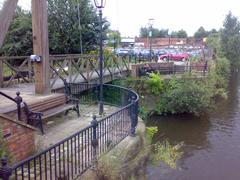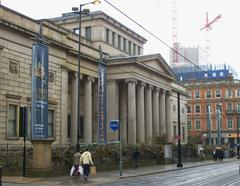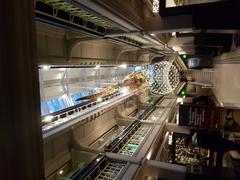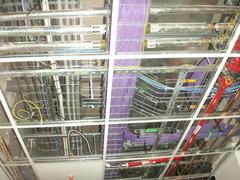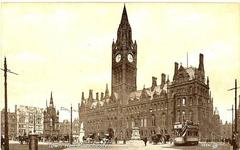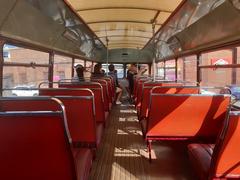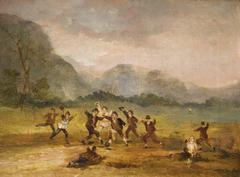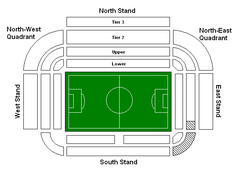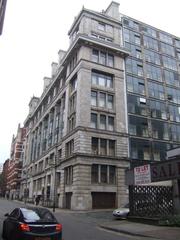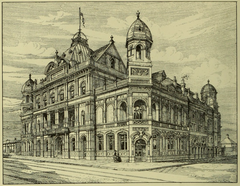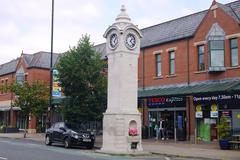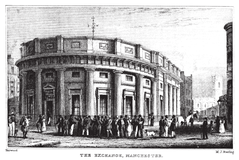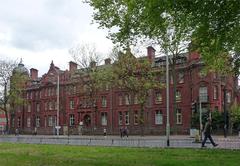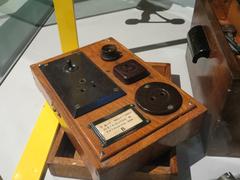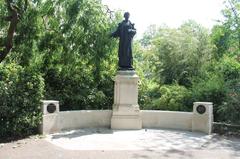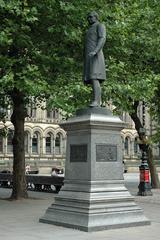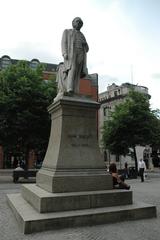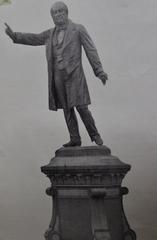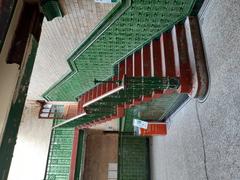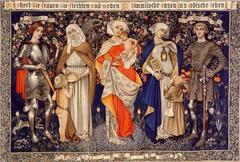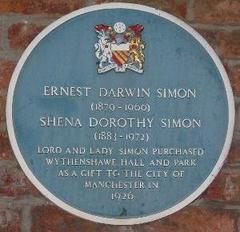Trinity Bridge Manchester: Visiting Hours, Tickets, and Historical Sites Guide
Date: 15/06/2025
Introduction: The Significance of Trinity Bridge in Manchester
Trinity Bridge stands as an emblem of Manchester’s urban regeneration, architectural ambition, and cultural connectivity. Since its completion in 1995, this iconic pedestrian bridge has physically united Manchester and Salford across the River Irwell, while also serving as a metaphorical bridge between their distinct identities. As the first UK project by celebrated Spanish architect Santiago Calatrava, Trinity Bridge’s minimalist, asymmetrical cable-stayed design—with its soaring white pylon and sleek steel cables—contrasts beautifully with the area’s historic red-brick Victorian surroundings, symbolizing Manchester’s evolving blend of heritage and innovation.
Beyond its architectural renown, Trinity Bridge has been pivotal in revitalizing a once-industrial riverside, spurring mixed-use developments and improving urban connectivity between Spinningfields in Manchester and Chapel Wharf in Salford. The bridge is integral to Manchester’s commitment to sustainable transport, green infrastructure, and vibrant public spaces that promote wellbeing and community engagement.
Open 24/7 with free, step-free access, Trinity Bridge welcomes everyone—from architecture enthusiasts and history buffs to casual tourists and locals seeking scenic walks. Its central location provides easy connections to public transit and proximity to attractions like The Lowry Hotel, Ordsall Hall, and Peel Park, making it a must-visit destination on any Manchester itinerary (GM Walking Salford Trail; Visit Manchester Heritage; calatrava.com).
Contents
- Historical Background
- Architectural Significance
- Role in Urban Regeneration
- Visiting Hours, Tickets, and Accessibility
- Travel Tips: How to Visit
- Nearby Attractions
- Integration with Green and Blue Infrastructure
- Socio-Cultural Impact
- Frequently Asked Questions (FAQ)
- Visuals and Media
- Related Articles
- Conclusion and Call to Action
Historical Background of Trinity Bridge
Trinity Bridge was inaugurated in 1995, serving as both a literal and symbolic connector between Manchester and Salford. Designed as part of a comprehensive strategy to rejuvenate post-industrial riverfronts, its construction marked a turning point in transforming derelict warehouse districts into vibrant, mixed-use spaces. The River Irwell, long a boundary between the two cities, is now traversed by a bridge that reflects a new era of collaboration and urban renewal (GM Walking Salford Trail; Visit Manchester Heritage).
Architectural Significance and Design
Trinity Bridge is a cable-stayed structure defined by a single, inclined 41-meter white pylon and a fan of steel cables supporting its deck. Calatrava’s signature approach merges engineering prowess with sculptural form, resulting in a bridge that appears light and airy while remaining robust. The bridge’s minimalist, white silhouette stands in dramatic contrast to the Victorian architecture of the surroundings, highlighting Manchester’s ongoing transformation and its embrace of both tradition and modernity (Policy@Manchester Urban Greening; calatrava.com).
Role in Urban Development and Regeneration
The construction of Trinity Bridge was a catalyst for the regeneration of its surrounding area, linking Spinningfields and Chapel Wharf and encouraging investment on both riverbanks. The bridge is part of the Salford Trail, a walking route that connects visitors to heritage sites like Ordsall Hall and Peel Park. Its presence has supported new commercial, residential, and leisure developments, and it serves as a prime example of integrating blue and green infrastructure for enhanced urban quality of life (GM Walking Salford Trail; Policy@Manchester Urban Greening).
Visiting Hours, Tickets, and Accessibility
- Visiting Hours: Open 24 hours a day, 7 days a week.
- Tickets: No tickets or entry fees—Trinity Bridge is entirely free to the public.
- Accessibility: The bridge features gentle ramps and wide pathways, making it fully accessible for wheelchairs, strollers, and those with limited mobility (The Travel Bunny Manchester Guide).
How to Visit Trinity Bridge: Travel Tips
Getting There:
Located between Spinningfields (Manchester) and Chapel Wharf (Salford), Trinity Bridge is easily reached via Salford Central Station or Deansgate-Castlefield Metrolink—both within a 10–15 minute walk.
Public Transport:
Manchester’s extensive bus and tram networks make access straightforward.
By Car:
Nearby parking is available, but public transport is recommended due to city centre traffic.
On Foot or By Bicycle:
The bridge is pedestrian and cycle-friendly, forming part of popular urban walking and cycling routes (Manchester Network).
Best Time to Visit:
Visit during daylight for best views; evenings offer a beautifully lit experience.
Safety:
The bridge and riverside paths are well-lit and maintained. Exercise standard city safety precautions, especially at night (Guard Mark).
Nearby Attractions
- The Lowry Hotel: Five-star accommodation adjacent to the bridge.
- Spinningfields: Manchester’s business, shopping, and dining hub.
- Ordsall Hall: Historic Tudor manor house.
- Peel Park: Expansive riverside green space.
- Deansgate: Bustling district with shops, bars, and restaurants.
- Parsonage Gardens: Tranquil green retreat near the bridge.
- People’s History Museum: Insightful look into British social history.
Many of these can be combined into a single walking tour (GM Walking Salford Trail; Manchester Pocket Guide).
Integration with Manchester’s Green and Blue Infrastructure
Trinity Bridge is a vital node in Manchester’s efforts to expand green and blue corridors—linking riverside paths, parks, and public spaces. Landscaping, seating areas, and public art installations enhance the area, inviting recreation and leisure while supporting biodiversity and climate resilience (Policy@Manchester Urban Greening).
Socio-Cultural Impact and Symbolism
Trinity Bridge is a powerful symbol of unity, physically connecting two cities and fostering collaborative urban life. It is a backdrop for public events, photography, and cultural activities, reinforcing its status as a beloved community asset (Visit Manchester Heritage).
Frequently Asked Questions (FAQ)
Q: What are the visiting hours for Trinity Bridge?
A: Open 24/7, year-round.
Q: Are there entry fees or tickets?
A: No, access is free.
Q: Is the bridge accessible to wheelchairs and strollers?
A: Yes, with step-free paths and ramps.
Q: Are guided tours available?
A: Trinity Bridge is included in some Manchester walking tours, though there are no dedicated bridge-only tours.
Q: Can I cycle across the bridge?
A: Yes, it is open to cyclists.
Visuals and Media
- See images of Trinity Bridge at sunset and at night
- Interactive map highlighting the bridge, nearby transport, and attractions
- Photography tips and inspiration
Related Articles
Conclusion and Call to Action
Trinity Bridge stands as a testament to Manchester’s blend of heritage and innovation—bridging not only two cities, but also eras, cultures, and ideas. Its accessible, car-free design and stunning architecture make it a highlight for visitors and locals alike. Whether you’re seeking panoramic views, a peaceful riverside stroll, or a glimpse into Manchester’s urban transformation, Trinity Bridge delivers a memorable experience.
To make the most of your visit, download the Audiala app for insider tips, guided tours, and up-to-date event information. Share your experience using #TrinityBridge and #ManchesterBridges, and explore more of Manchester’s evolving cityscape with our curated guides!
References and External Links
- GM Walking Salford Trail
- Visit Manchester Heritage
- Policy@Manchester Urban Greening
- calatrava.com
- Visit Manchester
- The Travel Bunny Manchester Guide
- Manchester Network
- Manchester Pocket Guide
- Wanderlog
- Guard Mark
- Visit England
- Hans Kullin
- Wikipedia
- fullsuitcase.com
- internetgeography.net
